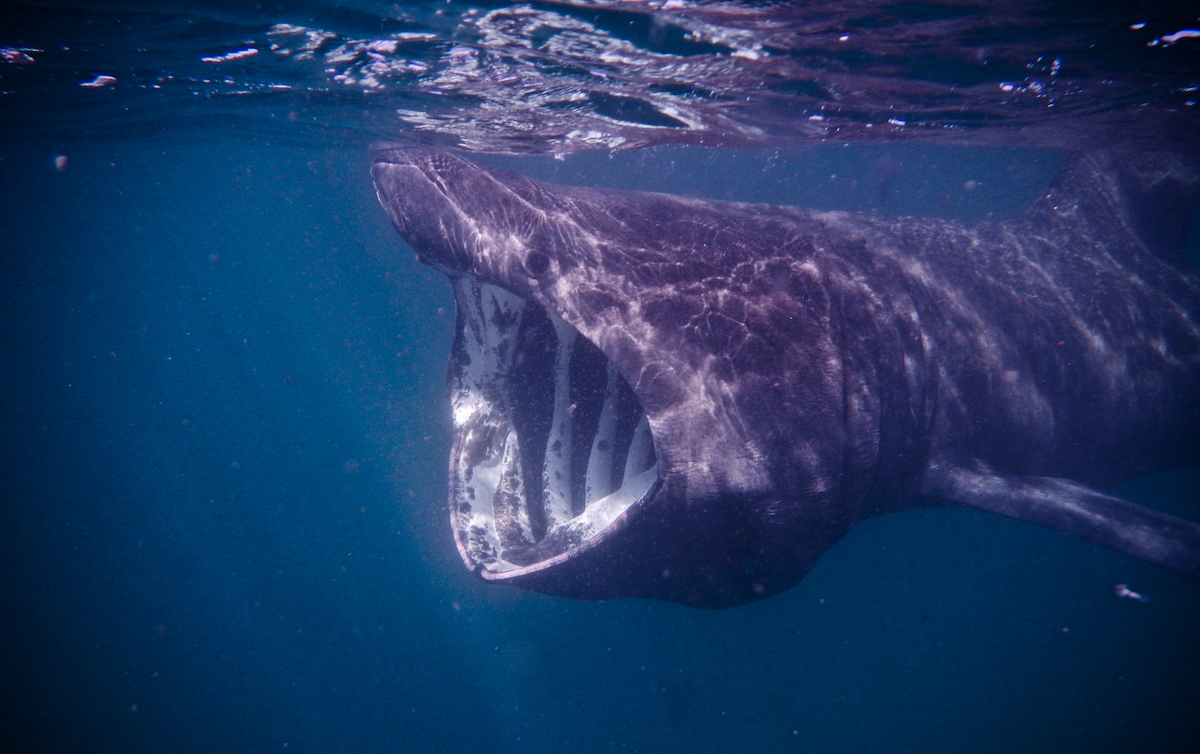All About Basking Sharks
Learn more about the second largest fish in the ocean

It’s a shark. But, it doesn’t use teeth to eat. Yes, I’m serious. I’m writing about none other than the basking shark. These gentle giants are often overlooked, thanks to the popularity of great white sharks and whale sharks—who steal all the glory.
But, I think the more we learn about basking sharks, the more we will find them both endearing and fascinating. Dive in…
Where do basking sharks live?
Basking sharks are typically seen swimming slowly at the surface, mouth wide open. Preferring life along the coast, they have been known to enter bays and estuaries—and to venture out into the open ocean, on occasion. Basking sharks can be seen in pairs and in larger groups of up to 100 or more. Their name comes from their habit of “sunning” themselves at the surface, with their first dorsal fins fully exposed. Basking sharks are highly migratory and live all over the world—in both cold and warmer temperate seas.
What do basking sharks eat?
These gentle giants are happiest when they are moving slowly through the water eating zooplankton. That’s why you’ll find these sharks feeding along areas that contain high-density zooplankton. Basking sharks are one of three species of large, filter-feeding sharks, alongside whale sharks and the megamouth sharks.
Basking sharks rely on the passive flow of water through their throats, also called the pharynx, while swimming. Food is filtered from the water by gill rakers, which look like the prongs of a rake, located in the gill slits. The basking shark’s gill rakers can strain up to 2,000 tons of water per hour.

Always in second place—or, are they?
Basking sharks are the second largest fish in the ocean—first place goes to the whale shark. Basking sharks can grow as long as 40 feet and weigh more than five tons. Did you know that basking sharks can swim just as fast as great white sharks? It’s true. A 2013 study found they can have bursts of speed up to 11 mph and are even able to jump (breach) out of the water.
If this doesn’t sound impressive, let’s put swimming 11 mph into perspective. It is twice as fast as the average speed seen in the men’s Olympic 50-meter (164 feet) freestyle swim and 100x as fast as I can doggy paddle to the other side of my community pool.
It’s still a mystery to researchers as to why these sharks jump out of the water. They don’t need to breach for food, like the great white shark. The best guesses, so far, are for communication or to rid themselves of parasites.
Basking sharks need your help.
The basking shark is currently categorized as “Endangered” throughout its range by the International Union for Conservation of Nature (IUCN).
Countless sharks, including basking sharks, are drawn to the rich habitat and abundant zooplankton of coastal ecosystems. Will you join Ocean Conservancy in taking action and telling Congress to prioritize funding that helps us protect coasts for sharks and for us?